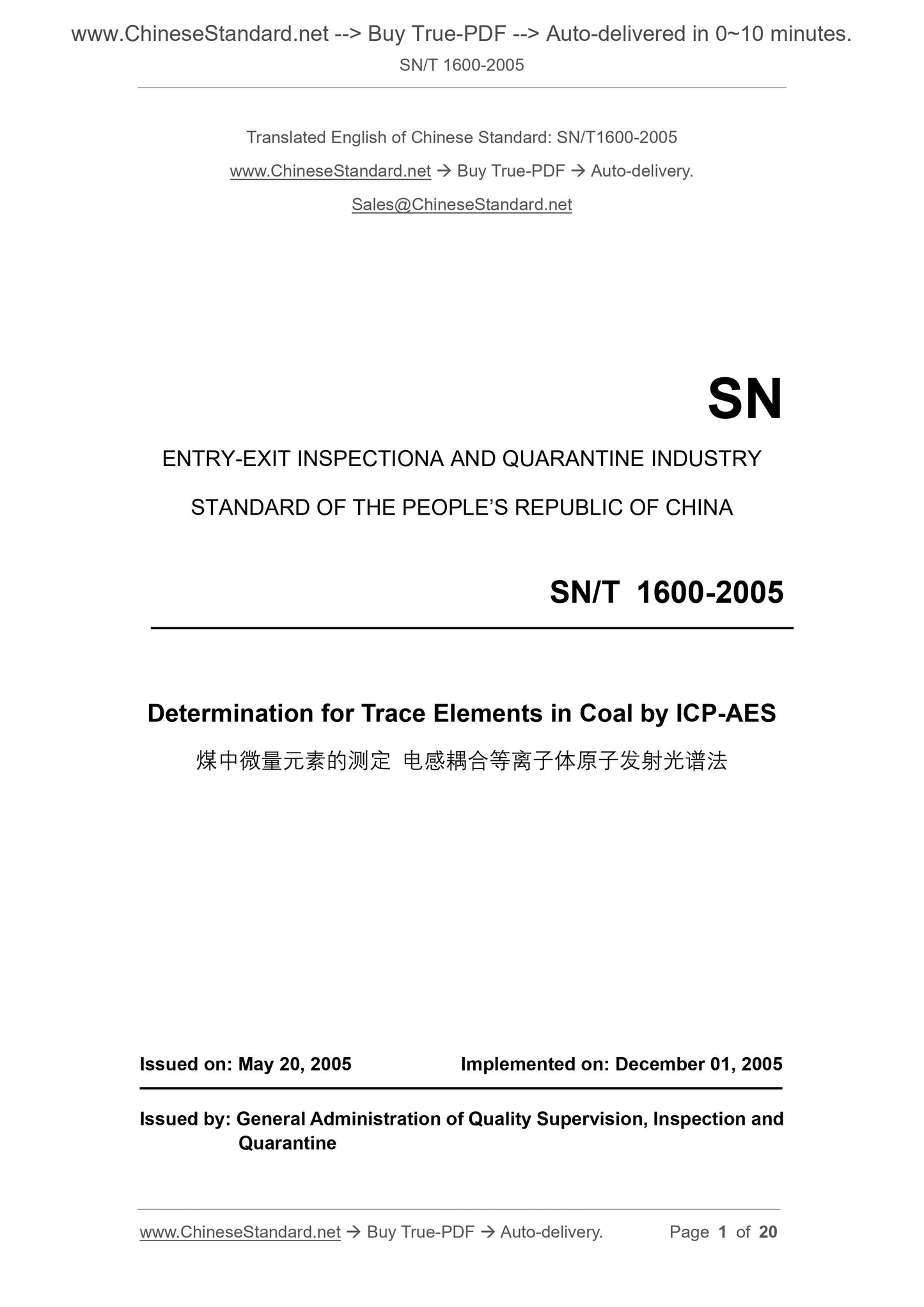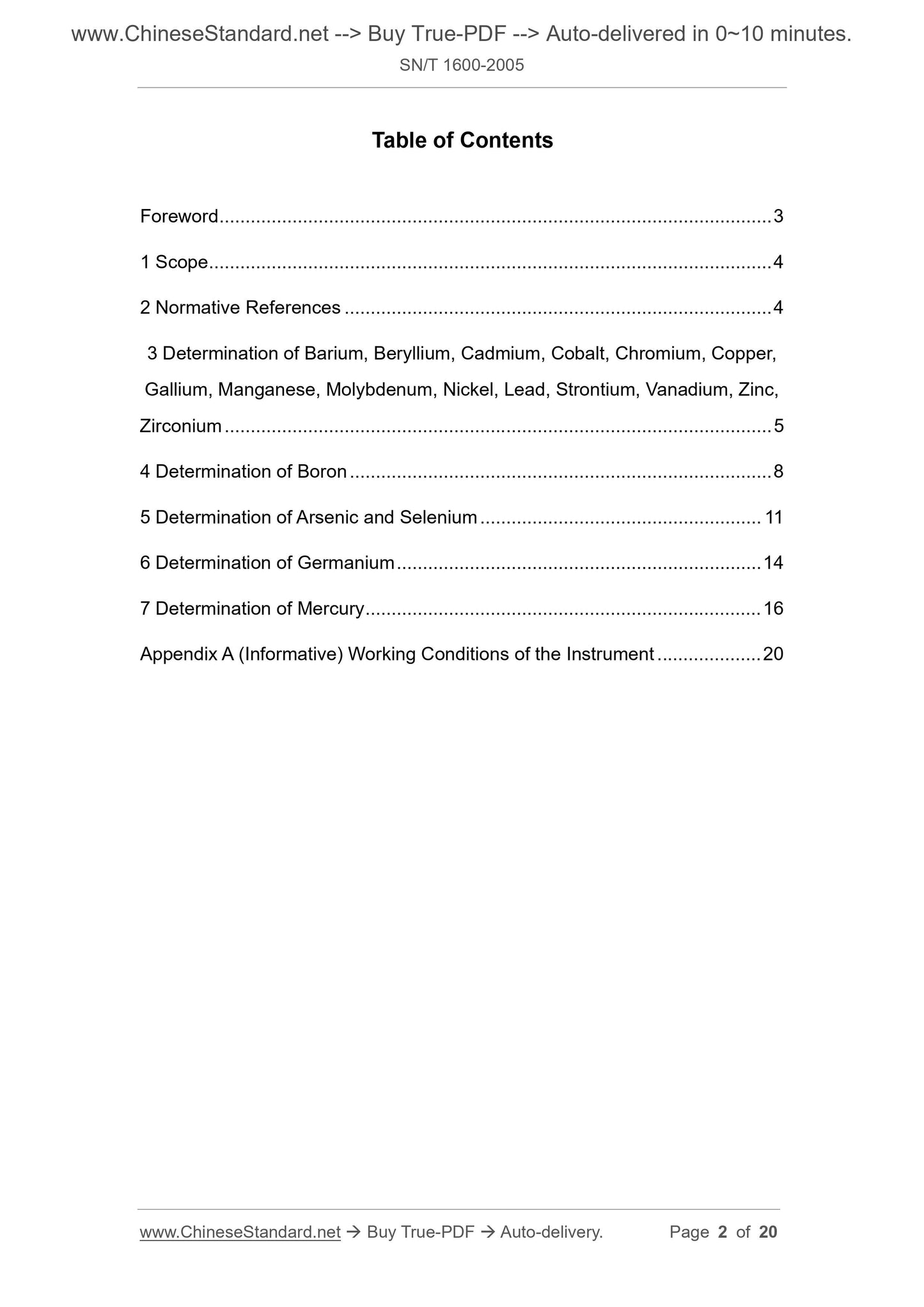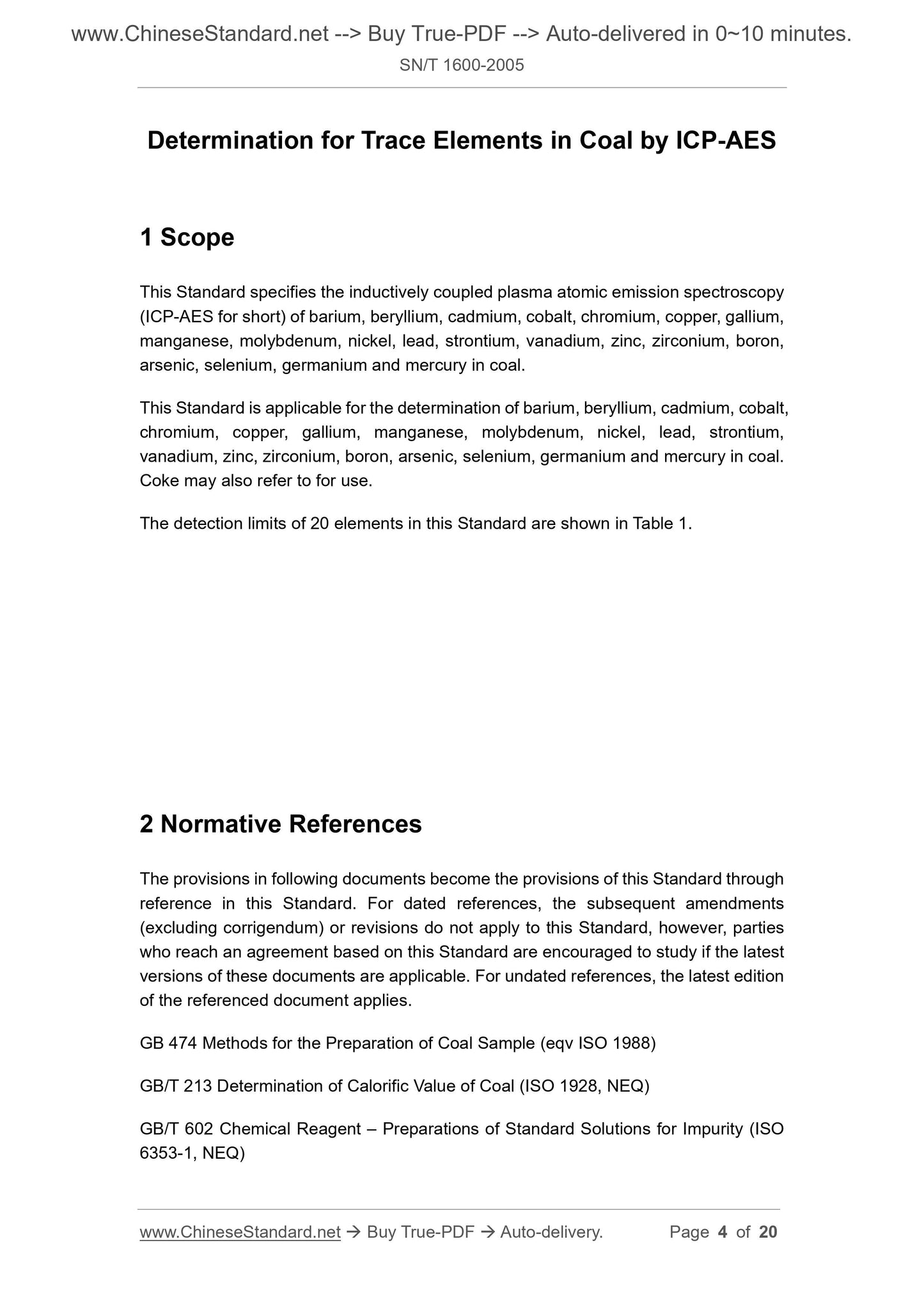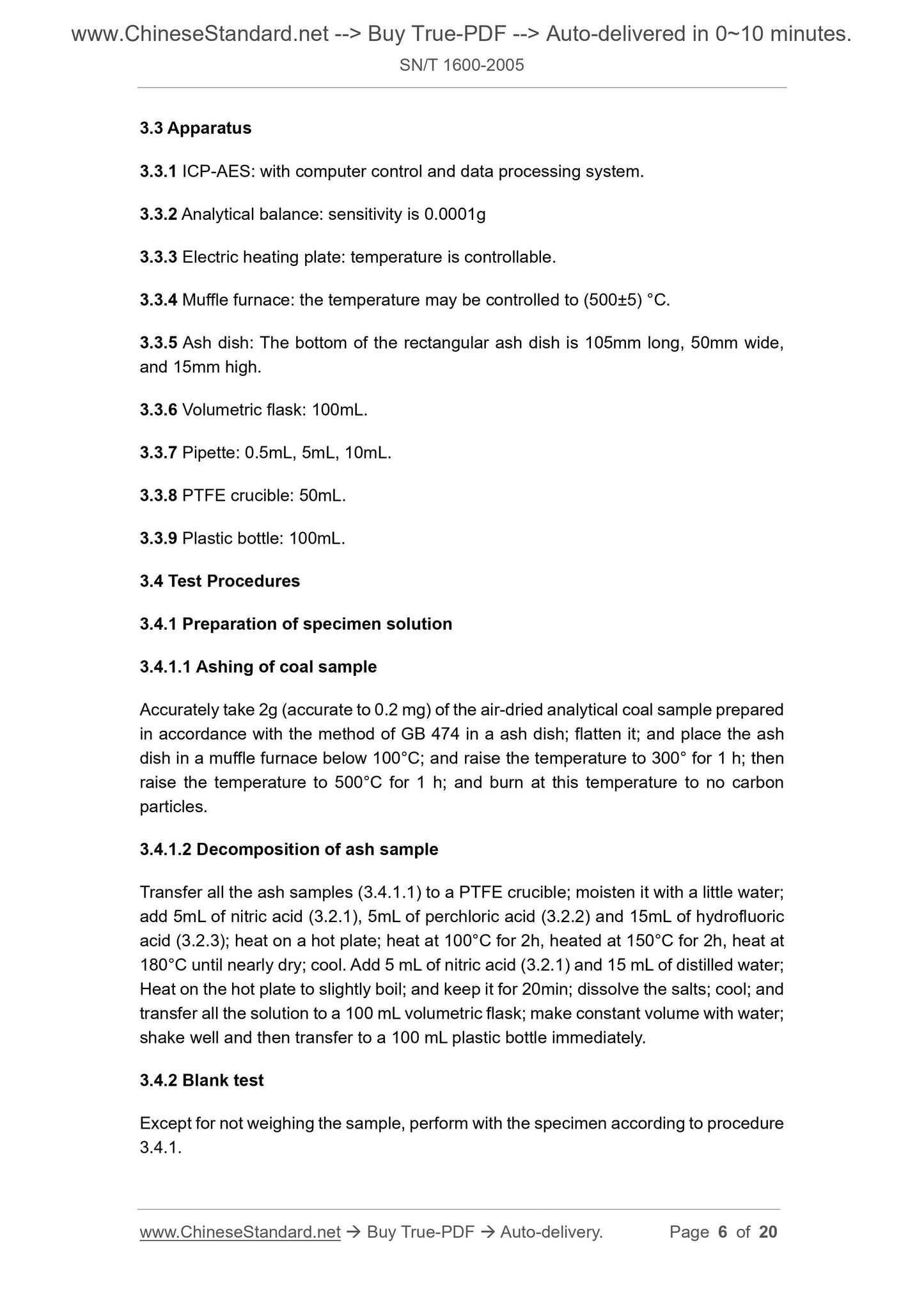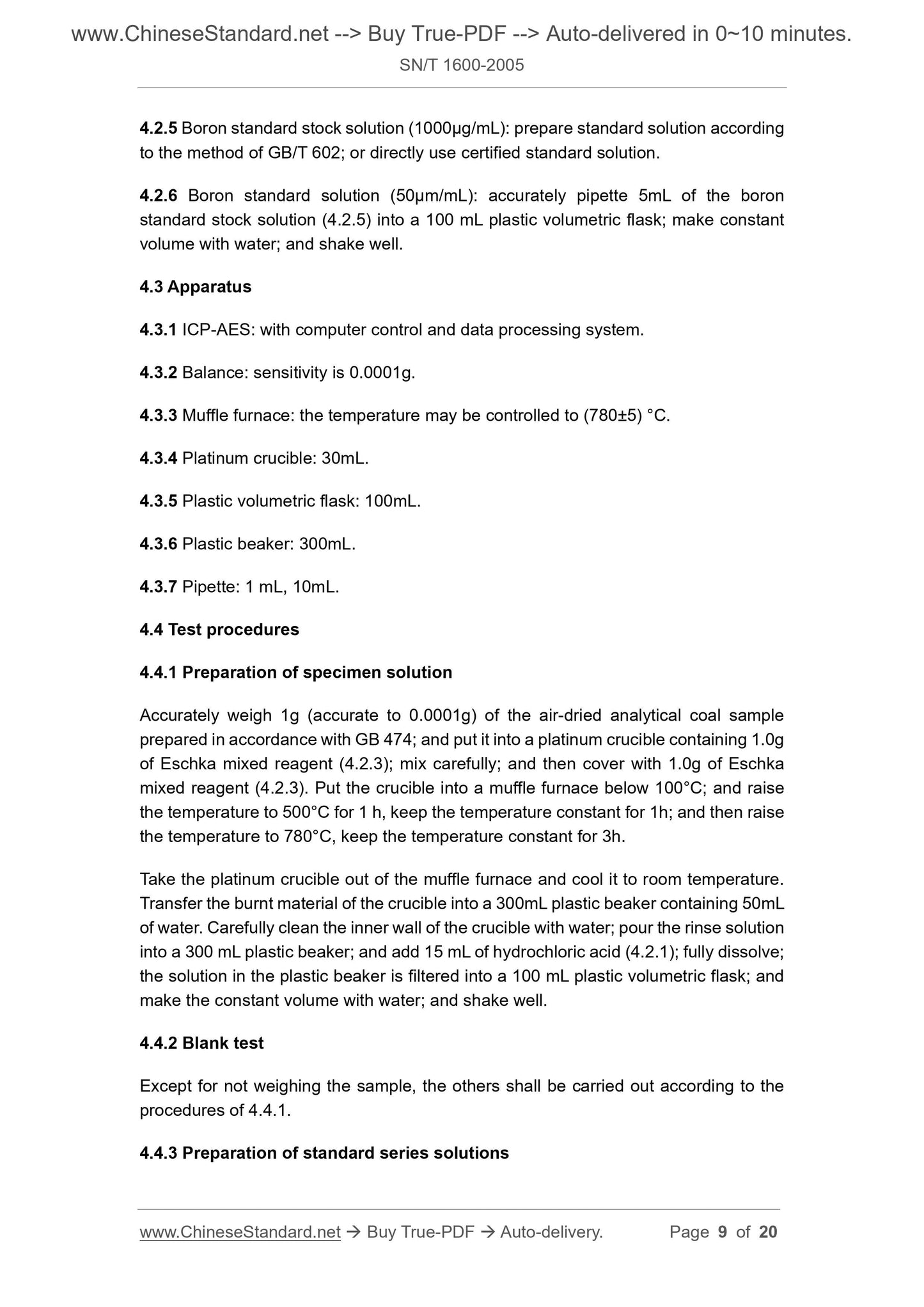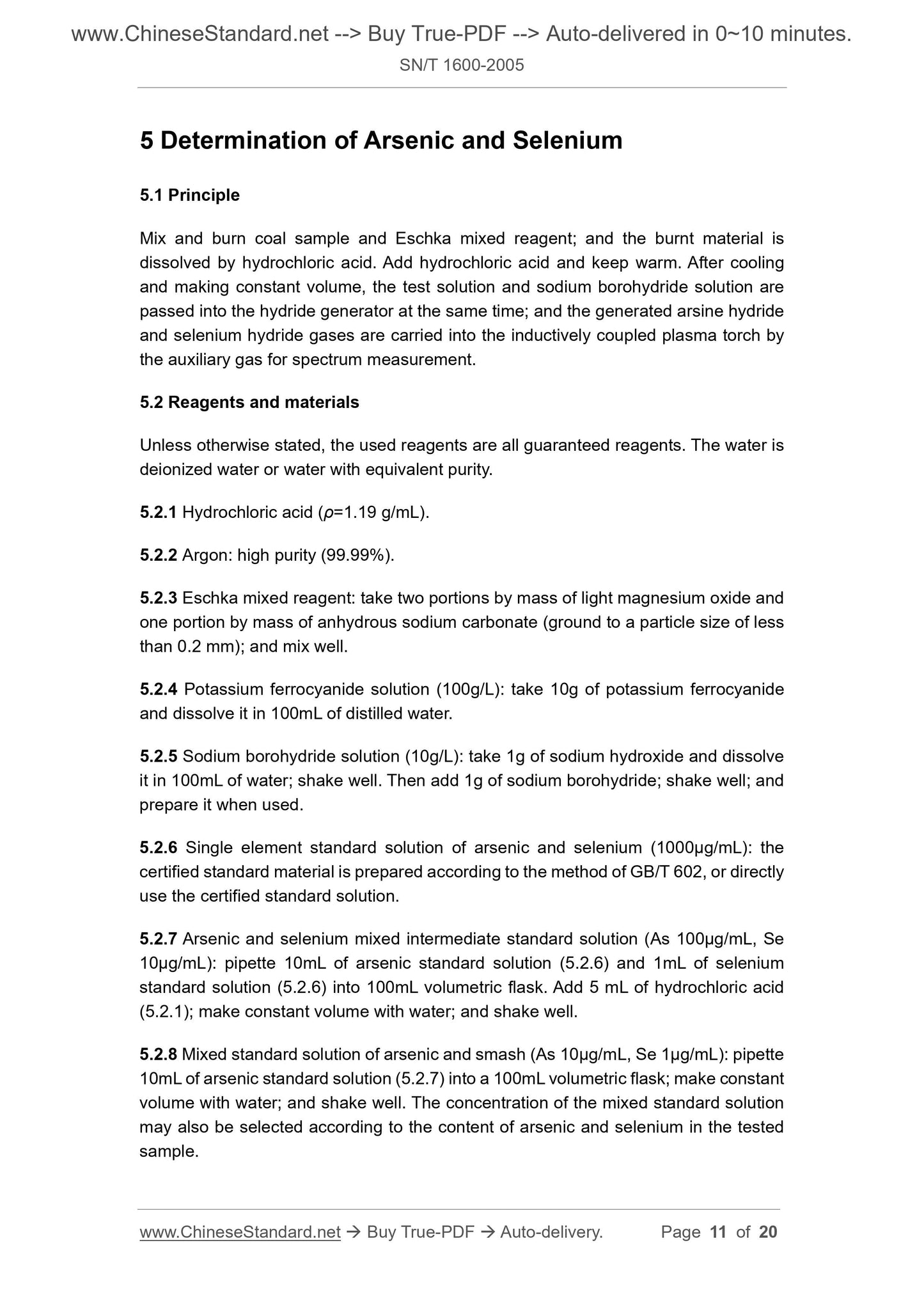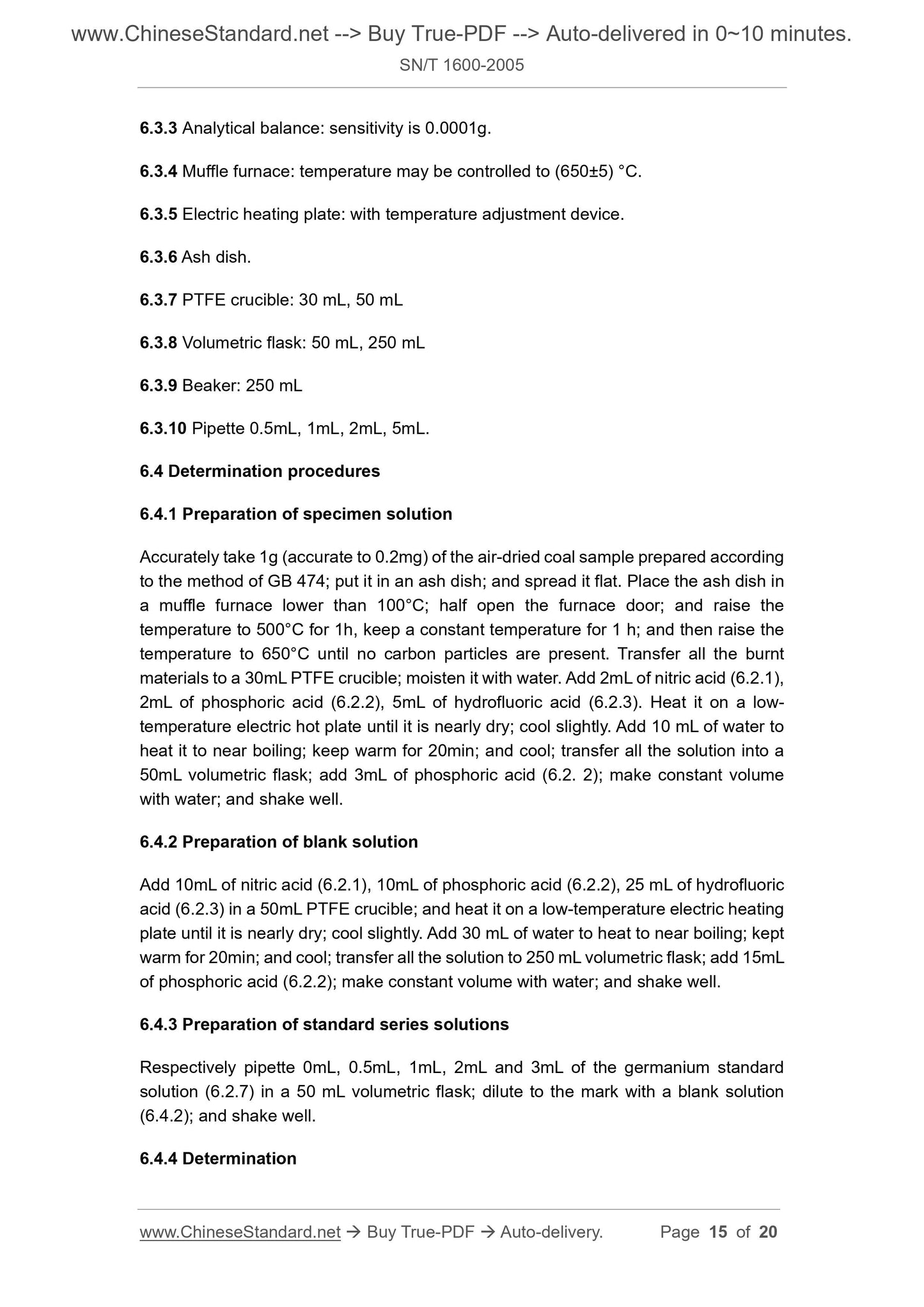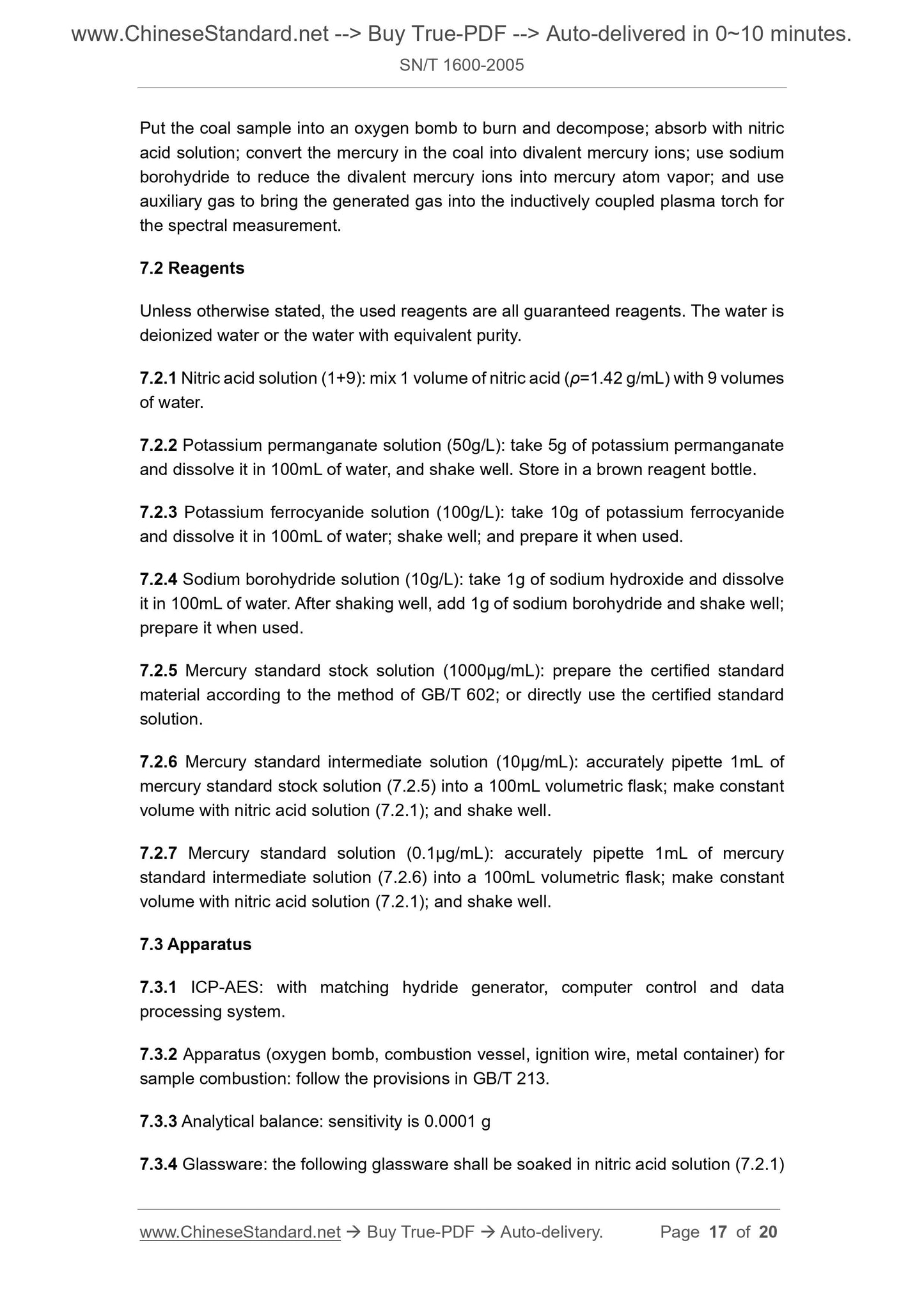1
/
of
8
www.ChineseStandard.us -- Field Test Asia Pte. Ltd.
SN/T 1600-2005 English PDF (SN/T1600-2005)
SN/T 1600-2005 English PDF (SN/T1600-2005)
Regular price
$200.00
Regular price
Sale price
$200.00
Unit price
/
per
Shipping calculated at checkout.
Couldn't load pickup availability
SN/T 1600-2005: Determination for Trace Elements in Coal by ICP-AES
Delivery: 9 seconds. Download (and Email) true-PDF + Invoice.Get Quotation: Click SN/T 1600-2005 (Self-service in 1-minute)
Newer / historical versions: SN/T 1600-2005
Preview True-PDF
Scope
This Standard specifies the inductively coupled plasma atomic emission spectroscopy(ICP-AES for short) of barium, beryllium, cadmium, cobalt, chromium, copper, gallium,
manganese, molybdenum, nickel, lead, strontium, vanadium, zinc, zirconium, boron,
arsenic, selenium, germanium and mercury in coal.
This Standard is applicable for the determination of barium, beryllium, cadmium, cobalt,
chromium, copper, gallium, manganese, molybdenum, nickel, lead, strontium,
vanadium, zinc, zirconium, boron, arsenic, selenium, germanium and mercury in coal.
Coke may also refer to for use.
The detection limits of 20 elements in this Standard are shown in Table 1.
Basic Data
| Standard ID | SN/T 1600-2005 (SN/T1600-2005) |
| Description (Translated English) | Determination for trace elements in coal by ICP-AES |
| Sector / Industry | Commodity Inspection Standard (Recommended) |
| Classification of Chinese Standard | D21 |
| Classification of International Standard | 73.040 |
| Word Count Estimation | 14,178 |
| Date of Issue | 2005-05-20 |
| Date of Implementation | 2005-12-01 |
| Regulation (derived from) | 2005 Bulletin No. 8 industry standard |
| Issuing agency(ies) | General Administration of Quality Supervision, Inspection and Quarantine of the People Republic of China |
| Summary | This standard specifies the coal barium, beryllium, cadmium, cobalt, chromium, copper, gallium, manganese, molybdenum, nickel, lead, strontium, vanadium, zinc, zirconium, boron, arsenic, selenium, germanium, mercury content by inductively coupled plasma atomic emission spectrometric method. This standard applies to coal, barium, beryllium, cadmium, cobalt, chromium, copper, gallium, manganese, molybdenum, nickel, lead, strontium, vanadium, zinc, zirconium, boron, arsenic, selenium, germanium, mercury content. Also refer to the use of coke. |
Share
